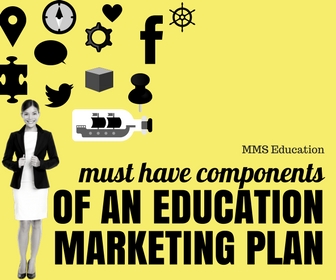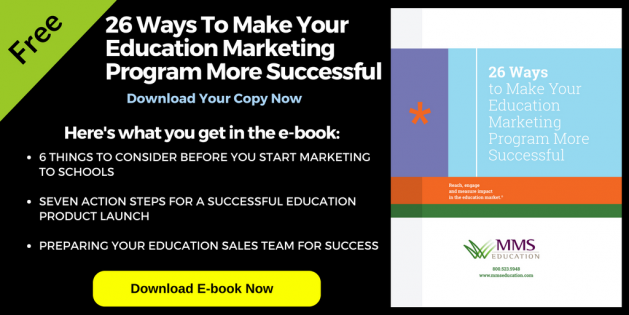 Developing an effective education marketing plan can be confusing and time-consuming. However, with the right frame of mind and these tips, it may not be as difficult as you think.
Developing an effective education marketing plan can be confusing and time-consuming. However, with the right frame of mind and these tips, it may not be as difficult as you think.
Set milestones. When it comes to developing an education marketing plan, one rule is key: Know your dates! Creating an effective milestone chart can be the glue that holds the entire marketing plan together. It forces you to consider all elements of the plan and provides you with an idea of a completion date to hold you accountable. The chart should incorporate important items on school calendars such as holidays, breaks, testing weeks, when next year’s budget is available, etc. This will ensure your plan stays on course. If you are having trouble creating a plan, Mind Tools has created a guide to help.
- Know your audience. Having a clear audience in mind will help to keep your plan focused. You may be targeting a specific subject-matter teacher, or the person responsible for purchasing who may not be a classroom teacher at all. It is important to determine which audience your plan will focus on to ensure your marketing speaks to the right person.
- Get your call to action right. Based on your audience, craft your call to action appropriately. This crucial piece is sometimes forgotten or left until the last minute. You want your target to know the next step without having to look too far. If you need help developing a call to action, Amy Lynn Andrews provides six simple steps.
- Try different channels. Since educators don’t all fall into one category, incorporating multiple outreach channels is a smart approach. With so many different experience levels and interests to consider, using multiple channels will help to reach a broader audience. For example, educators who are new to their role may be younger and may gravitate toward social media, while more senior teachers might prefer to receive messages the old-fashioned way. With many demographic factors at play, do not limit yourself to one or two channels.
- Include social media. More and more educators are on social, and many are using it for work purposes at home. Platforms like Facebook and Twitter provide educators with spaces where like-minded individuals can share ideas and resources. Companies such as HubSpot offer fantastic advice for getting started.
- Make your content count. Incorporate educator testimonials in your ads and communications. It’s a great way to demonstrate past success and make your product relatable. Educators place a high value on recommendations and feedback from their peers, so including educator testimonials within your plan will help them to gain your trust. If you have clients with something great to say about your product or program, include that in your marketing.
Still feel overwhelmed? MMS Education can help you with your education marketing plan! MMS has nearly 40 years of working with schools, systems, administrators, and agencies.
Most importantly, we embrace your mission and deliver on time and on budget, whether you’re outsourcing one specific project or need a complete turnkey operation.
Call us today at 866-382-6116 or fill out this form to see how MMS Education can help you reach, engage, and measure impact in the PreK-12 education market.

